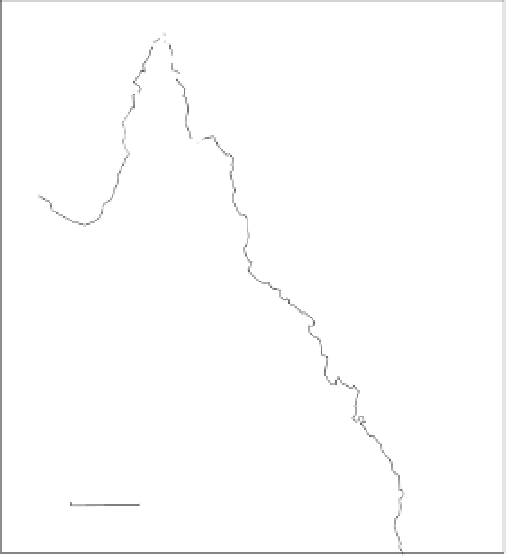Geoscience Reference
In-Depth Information
Great Barrier Reef
Gulf
of
Carpentaria
Princess Charlotte
Bay
Wallaby Is.
Redcliff
Fitzroy Is.
Cairns
Normandy Is.
Curacoa Is.
N.E. Australia
Lady Elliot
Is.
300 km
Figure 4.10.
Location of study sites along the Queensland coast, Australia.
site. This tidal range effectively forms the uncertainty margins associated with
the meancentral pressure of the cyclone.
By assessing the magnitude of prehistoric tropical cyclones a more realistic
view of the long-term frequency of these events could be ascertained. Nott and
Hayne (2001)found that the coral rubble ridge sequences along the Great Barrier
Reef were primarily recording only the largest or most intense cyclones, and
were not registering the smaller less intense events over time. This stands to
reason because any ridges that were built by lower magnitude events would
have been removed by the more extreme events. This phenomenon is analogous
to adirty stain around the perimeter of a bathtub, for only the highest bath
waters will leave a stain or ring and the shallower bath waters will be removed
by thehigher or deeper bath waters. Conversely, if shallow waters occur in
thebath for some time after the last deep-water bath, the subsequent shallow
waters will not remove the high water stain and shallow water stains will also be
preserved. Hence, with coral rubble ridges, the highest ridges have the greatest
preservation potential. The same is true of the raised gravel beach terraces at
RedCliff Point except here the lower elevation terraces have been preserved
recording subsequent less intense cyclones.
These records, for the main part, tend to only preserve one spectrum of the
cyclone climatology (i.e. the most extreme events). Nevertheless, these records
are useful for they show how often the most extreme events occur. These events









Search WWH ::

Custom Search